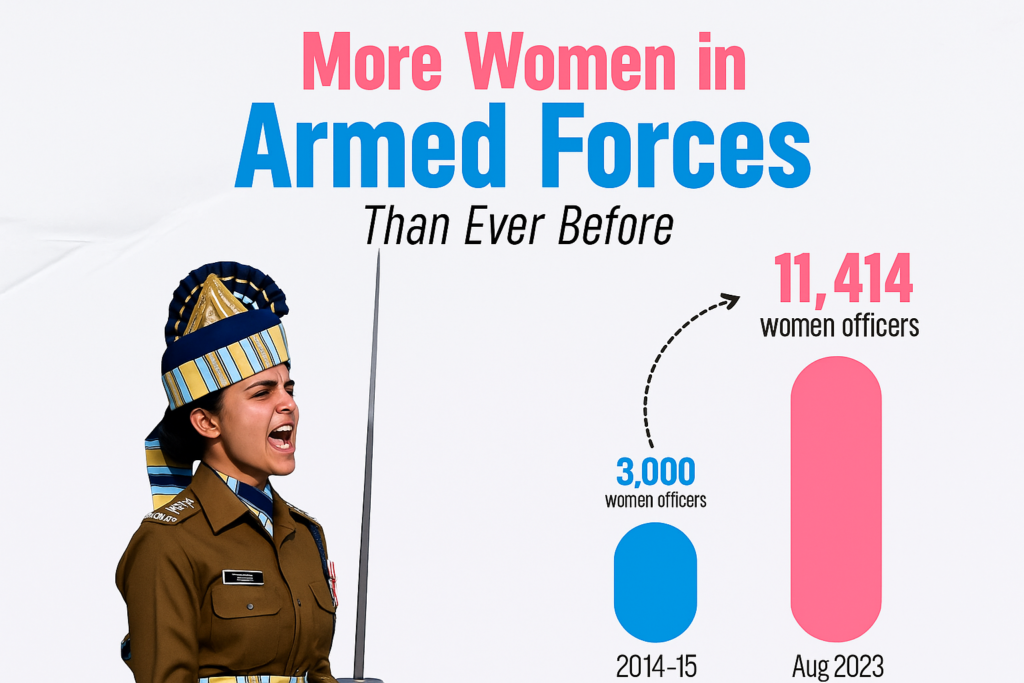In a country where military service has long been a male-dominated domain, a quiet transformation is unfolding. The number of women serving as officers in India’s armed forces has nearly quadrupled over the past decade—from just over 3,000 in 2014–15 to 11,414 by August 2023, marking a significant milestone in gender representation within national defense.
The surge is not simply a statistical uptick. It signals a profound cultural and institutional shift within the Indian Army, Navy, and Air Force—one shaped by judicial interventions, evolving policies, and a growing national conversation around gender equality.
“These numbers reflect more than just inclusion. They reflect institutional readiness to change,” said a senior official from the Ministry of Defence.
From Restriction to Recognition
For decades, women in uniform were relegated to administrative and medical roles. But in recent years, India’s top courts and military planners have driven change.
The landmark 2020 Supreme Court judgment granted women officers eligibility for Permanent Commission—a move that has since opened pathways to command and leadership roles. Policy shifts have followed: women are now joining the National Defence Academy, flying fighter jets, and leading operational units.
“Earlier, women were seen as temporary appointments in the forces,” said Lt. Col. (Retd) Rekha Sharma. “Today, they are shaping battlefield decisions.”
A Nation Catching Up to Its Aspirations
India’s move to broaden women’s participation reflects global trends, but it also addresses a strategic imperative. With a growing need for skilled personnel and an evolving warfare landscape—ranging from cyber to space—gender can no longer be a barrier.
Military academies are now training women cadets alongside men. Female officers are commanding units in forward areas and taking part in UN peacekeeping missions abroad.
Yet challenges remain. Infrastructure, gender sensitization, and combat integration are works in progress. Field deployments still skew heavily male. But the direction is clear.
“This is not a symbolic push,” said a defence analyst. “This is a workforce reform.”
The Road Ahead
The Defence Ministry has signaled that the coming years will see more aggressive integration of women in combat arms, specialized intelligence roles, and possibly even elite forces—pending operational assessments.
From courtrooms to cantonments, the momentum appears irreversible.


